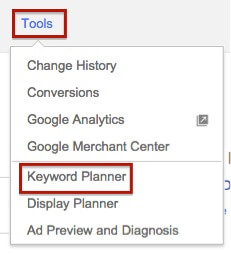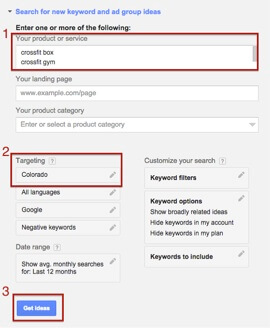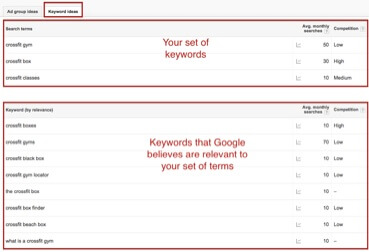Where to Get Started with an SEO Strategy for Your Fitness Business


These days, everyone is turning to the internet to find local businesses. Whether they’re accessing it from a phone, tablet or desktop computer, it’s the first place prospects will look to find you. Therefore, as a fitness business owner, you need to make sure your website is showing up on the Internet for these local-focused searches. Just having a website isn’t enough. You need to optimize your website to show up for these types of searches.
The Importance of Organic Visibility
As we mentioned in our previous blog post, An Introduction to Search Engine Marketing, search is a pretty big deal. Organic visibility is vital to your website’s success, as organic search, on average, was the largest driver of traffic to websites last year. Search Engine Journal released an article displaying exactly how important organic visibility is in terms of getting traffic to your site, and the findings were downright shocking:
- 70% of the links search users click on are organic
- 70-80% of users ignore paid ads, focusing only on organic results
- 79% of search engine users say they always/frequently click on the natural search results
Having your website show up in the search results is one thing, but having strong visibility, particularly in the top organic positions, is another. Where your site is located on the Search Engine Results Page (SERP) will have a big influence on whether or not you will actually get visitors to your site. In the same Search Engine Journal article, it was reported that:
- 75% of users never scroll past the first page of the search results
- In Google, 18% of organic clicks go to the first position, 10% go to the second position and 7% go to the third position
Get your copy of our SEO Guide for Fitness Businesses to learn how to optimize your site!
Keywords are Key
When you’re ready to get started on developing a Search Engine Optimization strategy for your website, creating a strong keyword list is the first place to start. A keyword list is the backbone of every SEO strategy, as these terms will guide all optimization efforts on your site. First, let’s establish the difference between two terms you’ll frequently hear in SEO: keywords and queries.
- Keyword: words or phrases that describe your product or service that you want your website to show up in the search results.
- Query: the specific term, or string of terms, that an actual searcher types into search box. To put it simply, searchers search for queries, you optimize your site for keywords.
Keyword Research Basics for Creating a Baseline Keyword List
To start your list, you need to perform some in-depth keyword research. First, think about what your fitness business does. Is it a martial arts academy? Or is it an affiliate gym? Start drafting a list of basic keywords that describe what your fitness business is. Think of different variations for these terms. For example, martial arts school and martial arts school are both popular terms to describe a martial arts business. Both gym and box are commonly used when referring to an affiliate fitness business. As you’re creating this initial list, try to think of everything your type of fitness business could possibly be called.
Once you have a basic list of keywords, the next step is to ensure people are actually searching for these terms. There are several free tools you can use to gather important data about keywords. My personal favorite is Google’s Keyword Planner. Bing also offers a keyword research tool within Webmaster Tools accounts. Please note that in order to use Google’s Keyword Planner, you will need to create an AdWords account (you do not actually have to run an advertising program on Google, you simply need to create an account to access this valuable tool).
Once you’ve logged in to your Google account, click on the “Tools” item in the top navigation, and then click the drop-down link, “Keyword Planner”.

Once you’re on the Keyword Planner page, get started by clicking the drop-down “Search for new keyword and ad group ideas”. Plug your baseline list of keywords into the “Your product or service” box, and adjust the Targeting section to the state your fitness business resides in. You can add additional information, such as your website or business category at another point in time. Right now, we’re simply checking to make sure people in your state are searching for the keywords you’ve gathered. Click the button, “Get ideas” to see the search volume for your initial set of terms.

There is a ton of information displayed on the results page. Don’t be overwhelmed by this information, as you really only need to focus on the following items within the “Keyword ideas” tab:
- Avg. monthly searches: The average number of times people have searched for this exact keyword based on the date range and targeting settings that you’ve selected. Focus on adding terms to your list that people are actually searching for, compared to creating a keyword list full of terms that have a search volume of 0.
- Competition: The number of advertisers that showed on each keyword relative to all keywords across Google. It’s much easier to gain visibility for terms that have lower competition. Broader terms, like “crossfit gym”, will have much higher competition, and therefore, will be more difficult to rank for than more specific terms like “crossfit gym east denver”.
The “Search terms” box will provide the search volume and competition for the terms you entered, and the “Keyword (by relevance)” section will display terms that Google believes are closely related to the terms you plugged in. Go through this section to find additional terms that should be added to your keyword list. Please note, this section is simply Google’s best guess of what is relevant to the initial list of terms you provided. You will find several terms in this section that are not relevant to your business and should not be included in your keyword list. With each term presented, ask yourself, “would I want my website to show up for this search term?” and “do I think my website would provide relevant, helpful information for someone searching on this specific term?” If the answer is no, then don’t add it to your list.

Tips for Expanding Your Keyword List
Now that you have a great list of terms that describe the type of fitness business you’re operating, it’s time to take the next step and develop a list of terms for the types of classes/fitness programs you offer. If you’re an affiliate gym, do you offer Olympic weightlifting classes or sessions without the barbell? If you’re a martial arts school, what types of martial arts classes do you offer? Do you have additional offerings such as self-defense classes? If you’re a small gym, do you offer group workout classes and boot camps? Think of every type of class/session/seminar/program you offer, write down these keywords, and follow the steps listed above to compile more terms to add to your keyword list.
After compiling a list of terms focused on your fitness business and its offerings, run through each page of your site to find additional keywords that might be worth including in your list. For example, are there well-known coaches or instructors that work at your gym? If so, there might be a strong search volume for their names, which you should then include in your keyword list.
Also, do your instructors, or does your gym as a whole, have specific certifications that people might be searching on when looking for a new gym to join? Competitor sites are another great way to find new keywords that you should optimize for. Browse through some of your top competitors’ websites to find specific types of content they’ve developed that you might want to consider for your site. Within that content, look for main keywords that people would be searching for to find this type of information, and plug them into the Keyword Planner Too.
Don’t Forget the Long-Tail Keywords
At this point, you have a pretty solid list of terms, but believe it or not, there’s still room for improvement. There are two types of keywords that should be included in your list, short-tail keywords and long-tail keywords. Short-tail keywords are broad terms that have a strong search volume, but also high competition. Long-tail keywords are more specific terms that typically consist of three or more words. While these terms tend to have a lower search volume, they have much lower competition and make up the majority of searches on Google. Around 70% of the daily searches on Google are from unique, long-tail queries. These long-tail keywords have lower search volumes, making it easier to show up for them in the search results, but have another important benefit as well, conversions. Long-tail keywords tend to convert better, as they catch people later in the buying/conversion cycle. Someone searching on “crossfit gyms” is probably browsing, while someone searching on “crossfit gym schedule near me” is likely looking to find a gym they can start attending.
One of the easiest ways to start creating long-tail keywords is by adding geo-modifiers to your terms. A geo-modified keyword is a term that has a specific location added to it. These terms are extremely important for local business owners. Here’s an example of a broad, short-tail term, compared to a more specific, geo-modified long-tail keyword.
Regular keyword – “martial arts”
Geo-modified keyword – “martial arts schools downtown denver”
To create geo-modified terms, add the state, city, neighborhood, area (“east denver”) to each and every one of your terms. Sometimes this extension might not make sense, but by doing this, you’ll have a great idea of everything people are and are not searching for when they’re trying to find your type of fitness business. You can also create long-tail terms by combining your fitness business terms with specific class terms (ex: “crossfit box with olympic weightlifting classes”).
You now have everything you need in order to create a solid keyword list for your website. The next step will be optimizing your website for these terms. Did you know Zen Planner offers SEM services for our website customers? Email sales@zenplanner.com if you’re interested in learning more about having us build your website and run your digital marketing strategy

I’m Coach Kelli, a devoted CrossFit gym owner with 15 years of experience managing my facility, along with owning yoga studios and wellness centers. Beyond the fitness world, I have a passion for cooking, cherish moments with my children and family, and find joy in spending time outside. Having experienced the highs and lows, I’m dedicated to leveraging my expertise to help you grow and succeed on your fitness journey.

I’m Coach Kelli, a devoted CrossFit gym owner with 15 years of experience managing my facility, along with owning yoga studios and wellness centers. Beyond the fitness world, I have a passion for cooking, cherish moments with my children and family, and find joy in spending time outside. Having experienced the highs and lows, I’m dedicated to leveraging my expertise to help you grow and succeed on your fitness journey.








